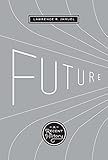Future : A Recent History / Lawrence R. Samuel.
Material type: TextPublisher: Austin : University of Texas Press, [2021]Copyright date: ©2009Description: 1 online resource (254 p.)Content type:
TextPublisher: Austin : University of Texas Press, [2021]Copyright date: ©2009Description: 1 online resource (254 p.)Content type: - 9780292795235
- 973.91 22
- E169.1 .S2415 2009eb
- online - DeGruyter
| Item type | Current library | Call number | URL | Status | Notes | Barcode | |
|---|---|---|---|---|---|---|---|
 eBook
eBook
|
Biblioteca "Angelicum" Pont. Univ. S.Tommaso d'Aquino Nuvola online | online - DeGruyter (Browse shelf(Opens below)) | Online access | Not for loan (Accesso limitato) | Accesso per gli utenti autorizzati / Access for authorized users | (dgr)9780292795235 |
Browsing Biblioteca "Angelicum" Pont. Univ. S.Tommaso d'Aquino shelves, Shelving location: Nuvola online Close shelf browser (Hides shelf browser)

|

|

|

|

|

|

|
||
| online - DeGruyter The Chora of Metaponto 2 : Archaeozoology at Pantanello and Five Other Sites / | online - DeGruyter Your Brain on Latino Comics : From Gus Arriola to Los Bros Hernandez / | online - DeGruyter Social Stratification in Central Mexico, 1500-2000 / | online - DeGruyter Future : A Recent History / | online - DeGruyter On the Dirty Plate Trail : Remembering the Dust Bowl Refugee Camps / | online - DeGruyter Shamans of the Foye Tree : Gender, Power, and Healing among Chilean Mapuche / | online - DeGruyter Lines in the Sand : Congressional Redistricting in Texas and the Downfall of Tom DeLay / / |
Frontmatter -- Contents -- Acknowledgments -- Introduction -- 1 he Shape of Things to Come, 1920–1939 -- 2 Great Day Coming, 1940–1945 -- 3 The Best Is Yet to Come, 1946–1964 -- 4 Future Shock, 1965–1979 -- 5 The Empire Strikes Back, 1980–1994 -- 6 The Matrix, 1995– -- Conclusion -- Notes -- Bibliography -- Index
restricted access online access with authorization star
http://purl.org/coar/access_right/c_16ec
The future is not a fixed idea but a highly variable one that reflects the values of those who are imagining it. By studying the ways that visionaries imagined the future—particularly that of America—in the past century, much can be learned about the cultural dynamics of the time. In this social history, Lawrence R. Samuel examines the future visions of intellectuals, artists, scientists, businesspeople, and others to tell a chronological story about the history of the future in the past century. He defines six separate eras of future narratives from 1920 to the present day, and argues that the milestones reached during these years—especially related to air and space travel, atomic and nuclear weapons, the women's and civil rights movements, and the advent of biological and genetic engineering—sparked the possibilities of tomorrow in the public's imagination, and helped make the twentieth century the first century to be significantly more about the future than the past. The idea of the future grew both in volume and importance as it rode the technological wave into the new millennium, and the author tracks the process by which most people, to some degree, have now become futurists as the need to anticipate tomorrow accelerates.
Mode of access: Internet via World Wide Web.
In English.
Description based on online resource; title from PDF title page (publisher's Web site, viewed 26. Apr 2022)


